8 Different Kinds of Mesquite Tree Species Worth Knowing
Mesquite trees have around forty-five different varieties. With some drawbacks, these trees are still popular. Most common ones among them are velvet, honey & Chilean mesquite trees.
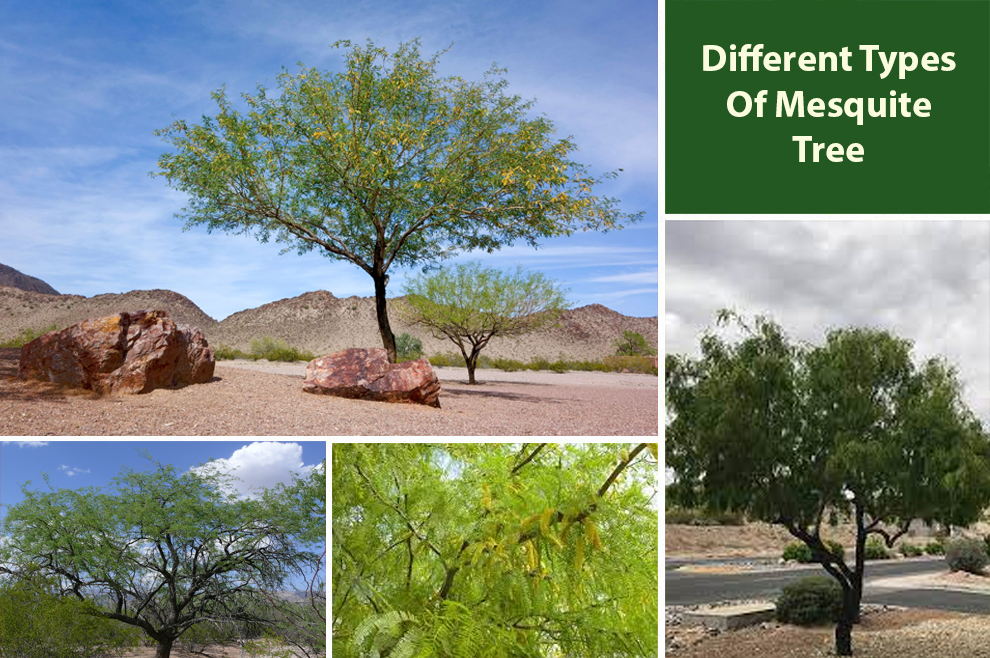
Mesquite trees, characterized by their thorny, shrub-like appearance, are commonly found in shrublands across states like Arizona, Texas, and other southern regions of the United States.
Among 45 different species, the most common mesquite tree varieties include honey mesquite, velvet mesquite, and screwbean mesquite.
While mesquite trees are valued for their hardiness, they can be considered a nuisance by homeowners and landowners in states like California and Texas.
Their extensive root system, which can spread up to 200 feet, earns them names like “devil trees” or “trash trees” as they absorb nutrients and water, inhibiting the growth of other plants in hotter regions.
However, mesquite trees contribute to soil fertility by fixing nitrogen and increasing its content.
In this guide, we will be giving you a rundown of the different types of mesquite trees listed below, their features, and why are these trees not everyone’s favorite.
- Honey Mesquite Tree
- Chilean Mesquite Tree
- Velvet Mesquite Tree
- Black Mesquite Tree
- Screwbean Mesquite
- White Mesquite Tree
- Creeping mesquite tree
- Prosopis Juliflora
Mesquite Tree Identification
| Tree type | Deciduous |
| Bark | Rough and scaly bark in a reddish-brown color. Young trees have thin and light-colored bark. |
| Leaves | Delicate, fern-like leaves in green or grayish-green color, measuring 8 to 10 inches in length. The feathery leaves are compound pinnate, consisting of 20 to 50 small oblong leaflets arranged on a stem. |
| Flowers | Long, cylindrical spikes known as catkins in shades of white or yellow, measuring 2 to 3 inches in length. |
| Seed pod | Unique, elongated seed pods that house bean-like seeds. The mature pods range in color from yellowish to reddish-brown and can grow to impressive lengths of 10 to 12 inches. |
| Do mesquite trees have thorns? | Yes, they have rigid, sharp, and pointed thorns with spikes reaching a length of up to 3 inches. |
| Where are mesquite trees found? | These trees can be found in grasslands, deserts, along streams, and hillsides. They are common in areas such as the Sonoran Desert, Chihuahuan Desert, and parts of Texas, Arizona, New Mexico, and Southern California. |
Different Kinds of Mesquite Trees
There are several different varieties of mesquite trees, each with its unique characteristics and adaptations. Some of the notable mesquite trees include:
1. Honey Mesquite Tree
| Native area | Deserts of Northern Mexico and the Southwestern United States |
| Tree height | They grow up to 30 feet in height, although some specimens can reach heights of 40 feet or more. |
| Requirements to grow | Sunny location with well-draining soil. They are highly tolerant of drought and can thrive in low-water conditions. They are also able to withstand high temperatures and are resilient in challenging desert environments. |
The honey mesquite tree, native to the deserts of Northern Mexico and the Southwestern United States, is a medium-sized shrub or leguminous tree known for its drought resistance and picturesque appearance.
With their twisted trunks, yellow spring flowers, and unique tubular seed pods, honey mesquite trees add beauty to any landscape.
They can grow up to 30 feet tall and 40 feet wide, thanks to their fast growth rate and deep taproots that reach impressive depths of up to 150 feet.
The scaly, reddish-brown bark and long thorns of honey mesquite trees also make them suitable for defensive hedges.
2. Chilean Mesquite Tree
| Native area | South America, North, and Central Chile |
| Tree height | 20 to 40 feet |
| Requirements to grow | Full sun, drought and heat tolerant, requires well-draining soil and little watering, heavy pruning is needed in spring |
The Chilean mesquite tree, also known as the thornless mesquite, is a resilient and low-maintenance tree that thrives in hot and dry climates. It features light and airy foliage, with branches that twist and turn gracefully.
During spring and summer, the tree produces yellowish-green flowers, which are followed by long, yellowish-brown seed pods.
These trees require minimal care once established, making them a popular option for low-maintenance landscaping.
With its attractive appearance and ability to thrive in challenging environments, out of the different mesquite tree varieties, the Chilean mesquite tree is a versatile and resilient choice.
It is famous for adding shade and beauty to gardens, parks, and other outdoor spaces.
3. Velvet Mesquite Tree
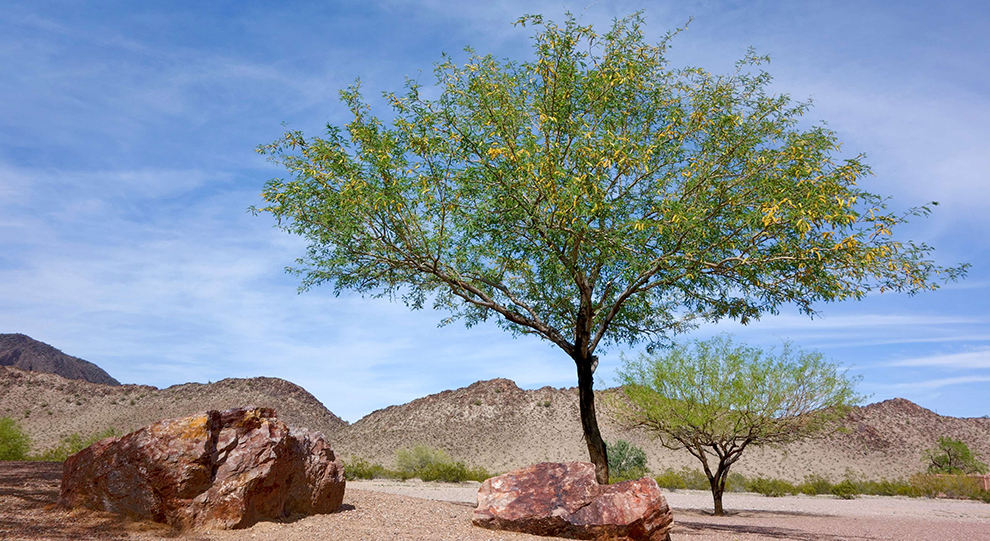
| Native area | Southwestern United States and Northern Mexico |
| Tree height | 25 feet |
| Requirements to grow | Prefer full sunlight and well-drained soils, including sandy or rocky soil types. Well-adapted to arid climates and are highly drought-tolerant. Can withstand extreme heat, strong winds, poor soil fertility, and limited water availability. |
Velvet mesquite trees, native to Southern Arizona, are favored for their adaptability to xeriscape landscapes and their minimal water requirements.
These small to medium-sized deciduous trees feature fern-like gray-green leaves, hanging spikes with light yellowish-green blossoms, and deep reddish-brown unkempt bark.
Velvet mesquite trees offer shade and beauty to sunny backyards and are well-suited to dry grasslands or damp ground beside streams.
One of the remarkable traits of these trees is their high tolerance for drought, which eliminates the need for frequent watering. Additionally, pruning young trees is essential for shaping them and removing thorns.
4. Black Mesquite Tree
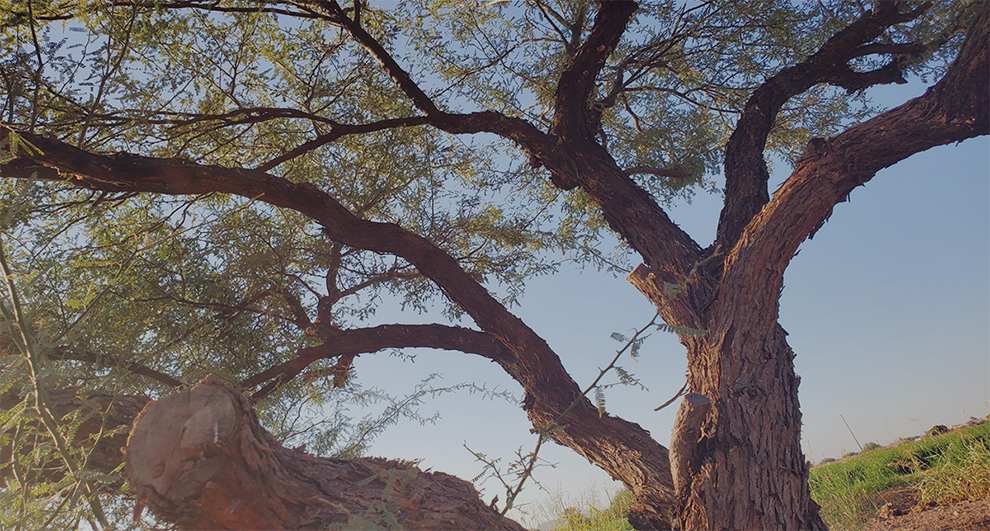
| Native area | South America |
| Tree height | grows between 13 and 32 ft |
| Requirements to grow | Full and bright sun, clayey or alkaline soil, adequate moisture |
The Black Mesquite tree, also known as Prosopis nigra, is a smaller mesquite tree species compared to other mesquite trees, typically reaching a height of around 30 feet.
However, under favorable growing conditions, black mesquite trees can grow as tall as 52 feet.
This evergreen tree has a neat and rounded crown, adding to its aesthetic appeal. Black mesquite trees are known for their leguminous nature, belonging to the Fabaceae family.
While their average height ranges from four to 10 meters, some exceptional specimens have been documented to grow as high as 16 meters.
5. Screwbean Mesquite
| Native area | Southern Arizona, Texas, and New Mexico |
| Tree height | 23 feet |
| Requirements to grow | Well-draining soil, plenty of sunshine, excellent drainage, and pruning are essential |
The Screwbean mesquite tree is a unique species that can grow as a huge shrub or a medium-sized tree. It has little yellowish blooms, pinnate leaves, twisted seed pods, and scaly brown bark that keeps shedding.
These trees thrive in diverse environments such as deserts, stream banks, and damp marshy areas.
What sets them apart from other mesquite trees are their remarkable seed pods, resembling plump, pale tan-colored caterpillars hanging in clusters.
Additionally, if you observe a Screwbean tree, you will notice that their leaves are not as big as the common varieties such as the velvet or honey mesquite.
6. White Mesquite Tree
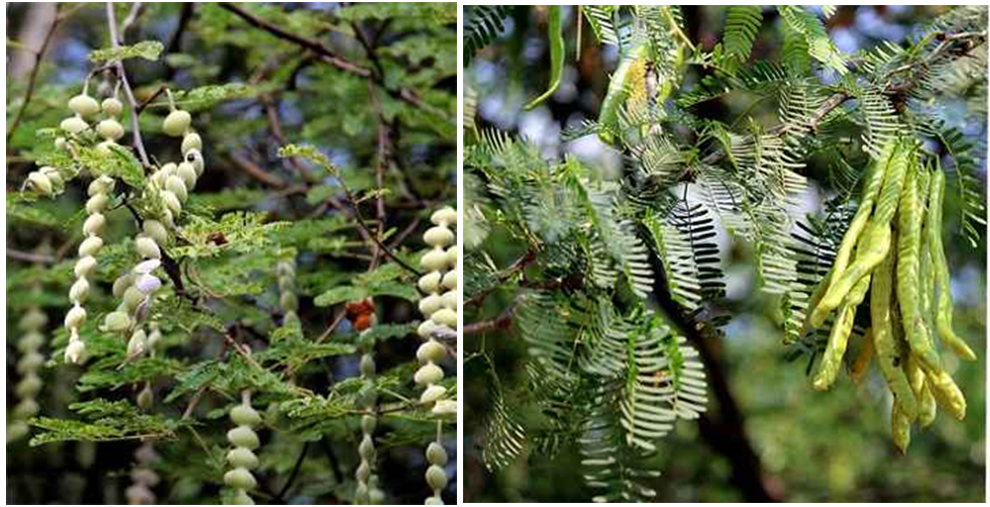
| Native area | South America |
| Tree height | Grows between 15 and 45 feet |
| Requirements to grow | They require warm and dry climates with full sun exposure to thrive. Well-draining soil is preferred. These trees are highly drought-tolerant and can survive with minimal water. |
The White mesquite is a semi-deciduous and thorny species. It is a medium-sized tree, reaching a height of 15 to 45 feet at full maturity, making it ideal for hedging purposes.
With a shorter trunk, it forms a rounded canopy that can span up to 33 feet in width. The bark is thin and exhibits a brownish-gray coloration that gradually tans over time. The tree produces small yellow or greenish-white flowers.
One distinctive feature of these mesquite tree varieties is their modified seed pods, which contain brown seeds. These seeds contain a sweet paste with a flour-like texture.
Consuming this paste can provide an energy boost. The timber of this tree is highly dense and sought after for various applications, including doors, floors, wine casks, furniture, shoe lasts, and paving blocks.
7. Creeping Mesquite Tree
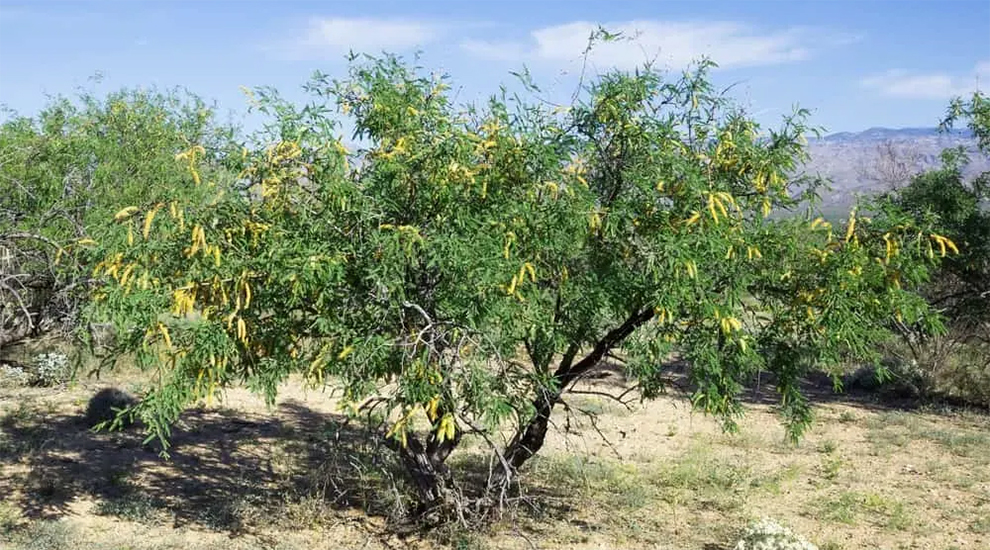
| Native area | Argentina |
| Tree height | 10 feet |
| Requirements to grow | Prefer well-drained soil and full sun. Can tolerate dry weather conditions and are well-suited to arid environments. Able to withstand periods of limited water availability. |
The Argentine screwbean, also known as the creeping mesquite tree, is similar to the screwbean mesquite, specially its coiled seed pods.
It has compound leaves that feel smooth & waxy in texture, white spines, and tube-like flowers. The flowers form yellow colored heads giving this thorny shrub-like tree is distinguishing appearance.
Following the flowering stage, the tree develops distinctive screw-like pods in yellow color, which house brown, bean-like seeds.
Among the different kinds of mesquite trees, the Creeping variety thrives in full sun conditions and typically reaches a height of approximately 10 ft.
8. Prosopis Juliflora
| Native area | Mexico, South America, and the Caribbean |
| Tree height | 40 feet |
| Requirements to grow | Tolerant of hot climates and dry conditions |
This evergreen mesquite tree is native to Mexico, South America, and the Caribbean. It is characterized by its thorny nature and large, open canopy with a flat-topped crown.
It can reach heights of up to 40 feet, with an average trunk diameter of about four feet. The tree has light green, deciduous leaves, and its flowers are typically greenish-yellow in color.
The long flowers appear in clusters of two to five and emerge soon after the leaves develop. The seed pods of this mesquite tree are also elongated, and the seeds remain viable for up to ten years.
Related: How Fast Do Mesquite Trees Grow
Why Are Mesquite Tree Species Bad?
Mesquites, known for their high-water consumption, can be voracious consumers of water, with a single tree consuming approximately 21 gallons per day.
Their ability to absorb groundwater and deplete the water table can have detrimental effects on surrounding vegetation. It leads to the decline of surrounding trees while allowing mesquites to thrive and expand.
Considered a prevalent pest plant in Texas, mesquite infestations affect nearly a quarter of the state’s grasslands.
The range of mesquite spans an extensive area of approximately 2.5 million acres, stretching across the United States and Mexico, from northern Mexico to Kansas.
The widespread presence of different types of mesquite trees and their significant impact on water resources and ecosystems highlights the need for management & control measures.
It is needed to mitigate their invasive nature and preserve the balance and biodiversity of affected regions.
